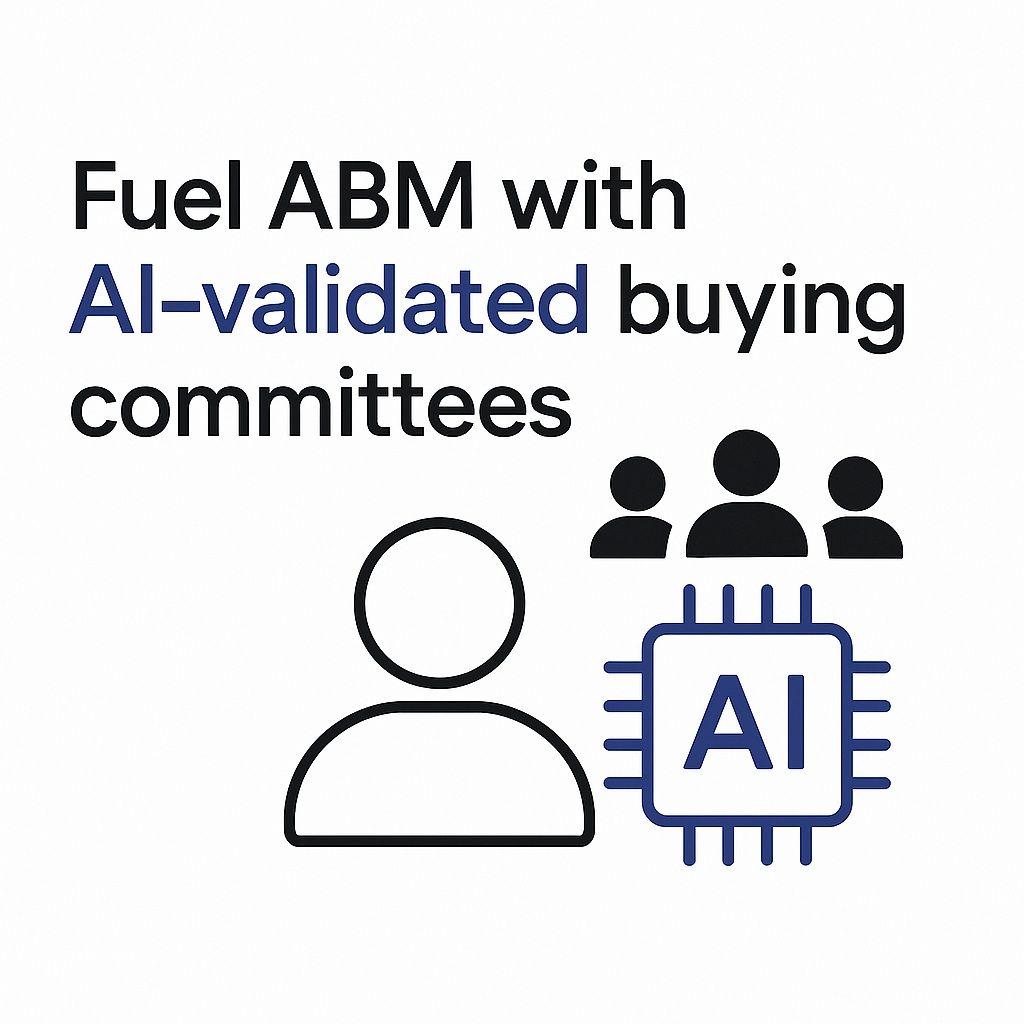Imagine you’re a prospector, decked out in Indiana Jones gear, and you’re standing in front of a huge mountain of sand. The sun is beating down on your back, you’ve got a shovel in hand, and the mission clear:
You have to sift through this mountain to find the little nuggets of gold that are hiding below the surface.
This is a dramatic example, but this is the daily reality for sales teams, whether it’s SMB or enterprise. Every day, SDRs and AEs have to navigate thousands of contacts, all in search of one thing: Qualified Leads.
But just like a seasoned prospector knows how to read the terrain and bring the right tools to dig for gold, skilled sales pros know how to qualify a lead before investing their time. Because the worst thing you could do is waste weeks talking to a prospector, only to find out that they just don’t have the budget or they’re not the right person.
Prospecting isn’t about chasing every shimmer (because everything that glitters isn’t always gold). It’s about looking past the shine and paying attention to the substance. In this guide, we’ll help you refine your process so you can stop digging blindly for fool’s gold and start finding quality leads that are genuinely golden.
The benefits of sales lead qualification are countless. If you focus on selling products or services to prospects that have the interest and the intent to buy by qualifying them first, you not only speed up the sales process but also increase conversion rates.
Even though sales leads are important, 61% of B2B marketers find that generating high-quality leads is their greatest challenge.
With this in mind, we want to help salespeople avoid the challenges with lead qualification, so we built this helpful guide.
Keep reading because we’ll share tips and frameworks to quickly disqualify invalid prospects and get to the decision-makers who need and want your solution the most.
What Does It Mean to Qualify Leads?
It's important to adopt a strategic approach that qualifies each lead's potential for conversion. This involves more than just a surface-level assessment; it requires a meticulous process that starts with thorough research.
Dive into the nuances of each lead, exploring their industry, pain points, and buying behavior. Immerse yourself in this wealth of information to gain valuable insights that allow you to tailor your approach to each prospect's specific needs.
It doesn't stop there. To truly qualify a sales lead, you must go beyond understanding and establish clear criteria for evaluation.
This means defining what constitutes a genuine sales opportunity versus a mere prospect. Consider factors such as budget, timeline, and decision-making authority.
Setting these parameters upfront, you ensure that your sales efforts are focused on leads with the highest potential for successful conversion.
Once you've conducted your research and established your criteria, it's time to put your discernment into action. This is where the rubber meets the road, as you sift through your leads with a keen eye for those that align most closely with your defined criteria.
Honing in on these high-quality B2B leads, you optimize your resources and maximize your sales effectiveness.
Strategically qualifying sales leads is about more than just ticking boxes; it's about leveraging data-driven insights and strategic thinking to identify the most promising opportunities in your pipeline.
With a well-honed approach to lead qualification, you can build a strong sales pipeline, boost your conversion rates, and ultimately drive business growth.
10 Ways to Qualify Sales Leads
Qualifying sales leads is critical for optimizing sales efforts and resources and keep sales people focused on the right prospects.
Here are some of the best ways to qualify sales leads:

1. Define Ideal Customer Profile (ICP):
Clearly outline the characteristics that make an ideal customer for your product or service. This includes demographics, industry, company size, and other relevant factors.
Make sure, from the beginning, that you have a clear ideal customer profile that shows you what the target prospect looks like. You should have a target industry, a target company size, targeted persona pain points, etc.
The more specific you can make your ICP, the easier it will be to quickly qualify or disqualify prospects.
2. Use Lead Scoring:
- Assign scores to leads based on their behavior, engagement, and demographics.
- Prioritize leads with higher scores, indicating a stronger likelihood of conversion.
3. Engage in Active Listening:
- During conversations, listen attentively to understand the prospect's needs and challenges.
- Tailor your responses to demonstrate how your product or service addresses their specific pain points.
4. Ask Qualifying Questions:
Closely related to BANT, you want to make sure that you are asking the right questions to figure out whether or not you have a great business opportunity in front of you. A good qualifying question strikes a balance between being targeted (and capturing the BANT criteria) and also being somewhat open-ended.
Here are examples of great qualifying questions…
- Who on your team would regularly use this product?
- What problems could our product help eliminate?
- Have you tried to solve this issue before? If so, what was great about that solution and what could’ve been better?
- In order to be a happy customer, what would you like to see from this product?
- What’s going to happen to your organization if this issue persists?
- Pose targeted questions to gather information on the prospect's budget, timeline, and decision-making process.
- Use open-ended questions to encourage detailed responses and uncover potential objections.
5. Utilize Technology:
- Leverage CRM (Customer Relationship Management) software to track and analyze lead interactions.
- Implement marketing automation tools for behavior-based tracking and scoring.

6. Review Past Interactions:
- Analyze past interactions and engagements to identify patterns indicative of serious interest.
- Track the prospect's engagement with content and responses to previous communications.
7. Assess Budget and Authority:
- Determine if the prospect has the budget for your product or service.
- Identify decision-makers and assess their authority in the purchasing process.
8. Evaluate Fit with Your Solution:
- Ensure there is a clear alignment between the prospect's needs and the benefits your product or service provides.
- Assess whether your solution is the right fit for the prospect's specific challenges.
9. Establish Clear Next Steps:
- Clearly outline the next steps in the sales process.
- Assess the prospect's commitment to moving forward and their willingness to engage in further discussions.
10. Regularly Reevaluate Leads:
- Continuously reassess and update lead qualifications based on new information.
- Be adaptable and willing to reevaluate leads as their circumstances change.
Combining these lead qualifying strategies, sales teams can enhance their lead qualification process, focus on high-potential opportunities, and increase the likelihood of successful conversions.
What’s Lead Qualification?
During your discovery call (7 steps to the best discovery call), lead qualification is the process of finding out whether or not a prospect has the potential to become a paying customer.
While lead qualification might sound trivial, and you may even think it’s best to try to turn every prospect into a loyal client, it’s important to evaluate a prospect’s qualifications because there’s a huge difference between interest and intent.
Someone may have an interest in your solution, but that doesn’t mean they are ready to buy.
If you try to sell to a prospect who doesn’t need your product or service, you’re only dragging out the inevitable. You’ll eventually come up against an obstacle that no amount of objection handling will take down, and the deal will fall through.
A solid lead qualification process will help you decipher between interest and intent with every prospect.
Figure Out the Prospect’s “Why”
No one wants to be sold to. Instead, most people identify pain points on their own, and then go online to do their own research on solutions well before they ever have a conversation with you for the first time.
In fact‚ Gartner research finds that when B2B buyers are considering a purchase‚ they spend only 17% of that time meeting with potential suppliers. When buyers are comparing multiple suppliers‚ the amount of time spent with anyone sales rep may be only 5% or 6%.
You need to keep this in mind and figure out the prospect’s “Why” ASAP.
In other words, what brought the prospect to you today at this very moment? Did they see a change in budget? Were certain roles added or eliminated? Did priorities change? Were new goals created? Has their competitive landscape changed?
Whatever the reason, you have to figure out what made the prospect want to look for a solution now.
Leverage BANT
The one lead qualification framework you want to leverage is BANT. To learn more about what BANT is in detail, but to give you a quick, cut-and-dry version, BANT stands for….
- Budget
- Authority
- Need
- Timing

These are the four factors you want to base your lead qualification on.
Does the prospect have the budget for your product or service? We’re not just talking money here either. What is it costing them to go without your solution? Establish early on whether or not the cost the prospect is paying (in wasted time, wasted resources, etc.) justifies your asking price.
Is the person you’re speaking with the final decision-maker on whether or not your solution gets a “Yes” or a “No?” Or are there multiple people you should talk to? As many as 10 decision-makers can be involved in a B2B buying process. Figure out early on what the decision-making process looks like and who you need to get your solution in front of.
Is the prospect experiencing pain points that not only make your solution necessary but desperately needed? If there’s no clear urgency for your solution and if there are no relevant pain points, there’s a good chance this prospect isn’t qualified. Read this to learn how to create urgency and close leads FAST.
Lastly, what does a realistic timeline for your prospect look like? In other words, when you take into account budget approval and the decision-making process, how long is it going to take your prospect to give a final decision?
Wrap-Up
By applying a strategic lead qualification process, you’re not just scooping sand and hoping for the best. You can zero in on gold with precision.
When you know how to read the terrain, ask the right questions, and measure the real potential of a lead, you stop wasting time on fool’s gold and start generating a pipeline filled with real treasure: prospects who are ready, able, and eager to buy.
Now that you’ve got the map and the gear, it’s time to dig smarter—not harder—and strike gold in your sales funnel.
If you’re looking to for more leads to qualify, consider signing up with Seamless for free today. Having verified over 1.9 billion contact and company records in 2021, Seamless will give you access to professionals in your target market so you can spend more time selling and less time worrying about B2B lead generation.



















